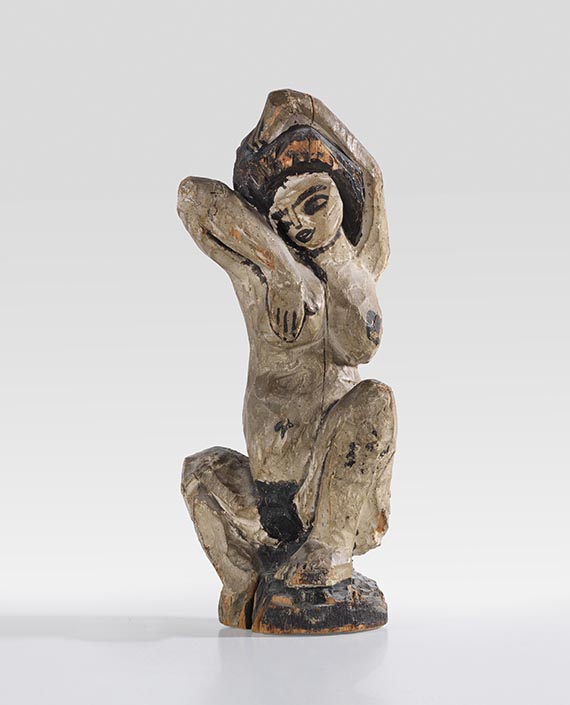Dictionary


Terracotta
Terracotta [Latin/Italian: "terra cotta" = baked earth] is porous, reddish clay made into vessels and sculpture and fired in kilns at low temperatures (900-1000° C) without glazes. Terracotta is usually quite malleable and is used for making art objects (such as small-scale sculpture, architectural sculpture) and - particularly in southern Europe - flooring tiles but is (except for special, high-quality terracotta fired at considerably higher temperatures) vulnerable to frost. In Greco-Roman antiquity and even long before small figures and reliefs were made of terracotta (or simply unfired clay), for instance the Campana Reliefs, as they are known. Terracotta sculpture was made from the earliest days of Greek art (especially on Rhodes, Samos and Crete). Terracotta sculpture figured prominently in Etruscan funerary and temple art in the form of statuettes, sarcophagi, gable decoration and cladding. Also of a high standard and found in great profusion are Late Classical and later Boetian terracotta statuettes. Late Gothic and Renaissance sculpture also featured works in terracotta. Modern architectural sculpture, tiling and flooring is also called terracotta.
Terracotta [Latin/Italian: "terra cotta" = baked earth] is porous, reddish clay made into vessels and sculpture and fired in kilns at low temperatures (900-1000° C) without glazes. Terracotta is usually quite malleable and is used for making art objects (such as small-scale sculpture, architectural sculpture) and - particularly in southern Europe - flooring tiles but is (except for special, high-quality terracotta fired at considerably higher temperatures) vulnerable to frost. In Greco-Roman antiquity and even long before small figures and reliefs were made of terracotta (or simply unfired clay), for instance the Campana Reliefs, as they are known. Terracotta sculpture was made from the earliest days of Greek art (especially on Rhodes, Samos and Crete). Terracotta sculpture figured prominently in Etruscan funerary and temple art in the form of statuettes, sarcophagi, gable decoration and cladding. Also of a high standard and found in great profusion are Late Classical and later Boetian terracotta statuettes. Late Gothic and Renaissance sculpture also featured works in terracotta. Modern architectural sculpture, tiling and flooring is also called terracotta.
Offers
Headquarters
Joseph-Wild-Str. 18
81829 Munich
Phone: +49 89 55 244-0
Fax: +49 89 55 244-177
info@kettererkunst.de
Louisa von Saucken / Undine Schleifer
Holstenwall 5
20355 Hamburg
Phone: +49 40 37 49 61-0
Fax: +49 40 37 49 61-66
infohamburg@kettererkunst.de
Dr. Simone Wiechers / Nane Schlage
Fasanenstr. 70
10719 Berlin
Phone: +49 30 88 67 53-63
Fax: +49 30 88 67 56-43
infoberlin@kettererkunst.de
Cordula Lichtenberg
Gertrudenstraße 24-28
50667 Cologne
Phone: +49 221 510 908-15
infokoeln@kettererkunst.de
Hessen
Rhineland-Palatinate
Miriam Heß
Phone: +49 62 21 58 80-038
Fax: +49 62 21 58 80-595
infoheidelberg@kettererkunst.de
We will inform you in time.




